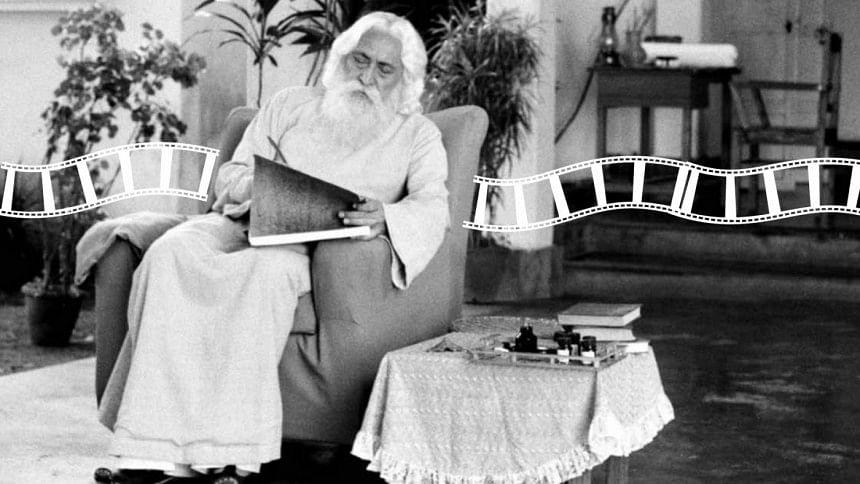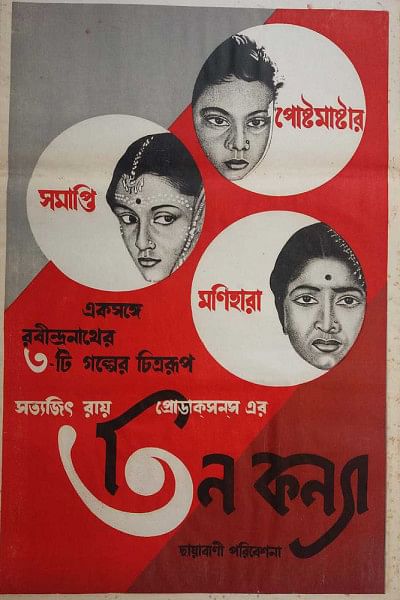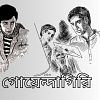Tagore’s legacy continues to live through film adaptations

Even in the contemporary era, Tagore's literary masterpieces remain a substantial source of inspiration for several filmmakers. Over the years, directors have skillfully imbued their own unique interpretations while delving into the richness of the Nobel laureate's works. The universality of his stories present a challenge for these filmmakers to produce a picture that is equally compelling, credible, and visually appealing. Perhaps the even bigger challenge is to depict the story in a way that enchants the readers, who have formed their own understanding.
The first of these adaptations date back to 1923, when Naresh Mitra directed a silent film, "Manbhajan", based on Tagore's short story of the same name. Even though mythical stories were still the norm and films were still silent, the romantic play won over the audience with its tender portrayal of marriage and womanhood. Around the same time, six other silent films, including ones by Sisir Kumar Bhaduri, Madhu Bose, and Premankur Atarthi, were made based on various short stories by Tagore.

He set a revolution among the industry, and appreciated the language and power of cinema. The adaptation of his films ushered in the new era of talkies' cinema, allowing viewers to enter a new sense of relatability. Directors kept on experimenting with their styles and scripts, with Tagore's works being one of the few constants. The maestro himself directed "Natir Puja" in 1932, based on his celebrated play of the same name. It was produced by Birendranath Sarkar and had art direction by Abanindranath Tagore and costumes by Protima Devi. Unfortunately, the highly anticipated film was destroyed in a terrible fire, leaving little to remember Tagore as a director.

In the following years, several filmmakers worked on adaptations, as the audience grew a newfound liking for such films. One of Tagore's short stories, "Khudhito Pashan" (Hungry Stones), served as a creative inspiration for many of these directors. The tale of this haunted palace has been retold countless times, by authors as diverse as Tapan Sinha ("Kshudhita Pashan", 1960), Gulzar ("Lekin", 1991), and Mrinal Sen ("Antareen", 1993). While Sen added a new dimension to the story, others remained loyal to the original source.

In the 1960s, Satyajit Ray developed a new style of portraying Tagore's works in a cinematic lens. He demonstrated the power of interpretation, and transformed the eminent works into contemporary masterpieces. He directed "Teen Kanya" in 1961, bringing together three independent short stories with a special emphasis on female characters. He was one of the first people to recognise literary works as agents of social change, and highlighted the strength of femininity through his characters. In 1964, he revisited Tagore's novel "Nashtaneer" (The Broken Nest) by presenting the story from the perspective of the wife, Charulata, in a more radical interpretation. While the original narrative focused on the husband, whose marriage breaks down, Ray shifted the viewpoint to highlight the loneliness of the wife.

Years later, Rituparno Ghosh embarked on a similar journey and reimagined Tagore's work through cinematic brilliance. The first of these films, "Chokher Bali" (2003) centered on the love-hate relationship of a wife, and a widow who enchants her husband. Ghosh shed light on the sensitive issue of widowhood, and followed Tagore's footsteps in crafting a female character who is not bound by societal conventions. In 2012, he directed "Chitrangada" which turned out to be the most memorable among modern retellings due to the way it addresses gender fluidity.
Tagore's works form a prominent part of Bengali culture, and continue to inspire adaptations across different media. These interpretations have greatly helped preserve his works in the cultural discourse, and reflect how the literary genius was way ahead of his time in terms of thoughts and opinions. In the years to come, these films shall continue to remind people of his illustrative storytelling and unforgettable characters.

 For all latest news, follow The Daily Star's Google News channel.
For all latest news, follow The Daily Star's Google News channel. 









Comments